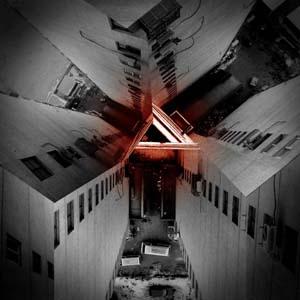Self Talking
dal 18/10/2002 al 5/11/2002
Segnalato da
18/10/2002
Self Talking
CAAW - China Art Archives and Warehouse, Beijing
The artistic coterie selected by Wu Hong for this new photographic happening clearly aims to conciliate the two principal stylistic trends which have up to now been developing within the modern and contemporary chinese agenda, insofar giving voice to a collective of 13 on average young artists which however plugging in the creative stream contextualized out of the present social politics, tend to keep the distance from the general phenomenon of the so called 'conceptual art', while moving along the path of a third modus vivendi.

The artistic coterie selected by Wu Hong for this new photographic happening clearly aims to conciliate the two principal stylistic trends which have up to now been developing within the modern and contemporary chinese agenda, insofar giving voice to a collective of 13 on average young artists which however plugging in the creative stream contextualized out of the present social politics, tend to keep the distance from the general phenomenon of the so called ''conceptual art'', while moving along the path of a third modus vivendi.
These works appear like visual replacements of the artist's interior world that they give substance to in everyday life, on the base of those coordinates which trace personal as well as individual life experiences.
Through the camera lens the ordering priorities which give shape to the ideal concept of their routine elaborate an interpretation of existence in itself.
Photography becomes an authentic and moreover evocative stimulus to meditation, it immobilizes reality's scraps densely imbued with significance, such as in the spontaneous group images by Zhong Hongshen and in the genuineness of the glances which Sun Hongbing hunts around himself and in the environment where he lives.
The fabric of the city turns out to be a confused and yet blurred system whereas it disintegrates and homologates all the details which make it up: in this sense Weng Fengyi and Yi De'er make use of the same vouyeristic layout (the first by means of a magnifying lens, the second by little mirrors)in order to survey all the smallest fractions of everyday reality.
Meng Jin builds up digital deconstructions of the common visual perception of space, by reproducing ''dizzy'' images shot from the top of buildings' roofs, which give proof of human presence on the territory.
On another side the ephemeral that affects modern mundane attitudes is argumented by both Yang Dong and Bai Yiluo, even if by use of two different representative subjects; the first detects them in the dissipate and limp practice of some friends and young people, while the second captures cynical skatches of objects, flys and pube hairs, overturning the official order of things, which stands gazing at the deterioration of human relationships.
Jiang Zhi gives voice to the sense of uneasyness from the false current mystic, by narrating the story of Mumu, a woman who by magic is transformed into a puppet, and so became guardian and owner of the dreams of the man she's taking on his trip to Tibet.
The last five artists focus on the research of the subtle shadowy line which marks the passage from existence to extinction, whilst intent on catching in the inertia of death and in the human fear towards it, the real significance which nowadays human being can't help disregarding and curtailing.
In Yan Jun's b/w the last moment of life is unfrozen from the funerary posture, while the photos shot by Yang Qiang lay bare the threatening and chilly images of illness and old age.
Life and death: farthest ends which stand faraway but even so close; they are sets and intersections of the same energy stream permeating every single being, such as the age-old trees portrayed by Zhu Jiangbo, who depicts their revival after the uprooting from the primitive forest of Fujian, Jiangxi and Guizhou.
The progress and magic of life are finally part of the subjects by Wang Xinyi, where the complexity of existence is disclosed in the funeral portraits of worms, cats and birds.
China Art Archive and Warehouses
P.O.Box 43 Beijing 100102
Beijing
naac@public.gb.com.cn



